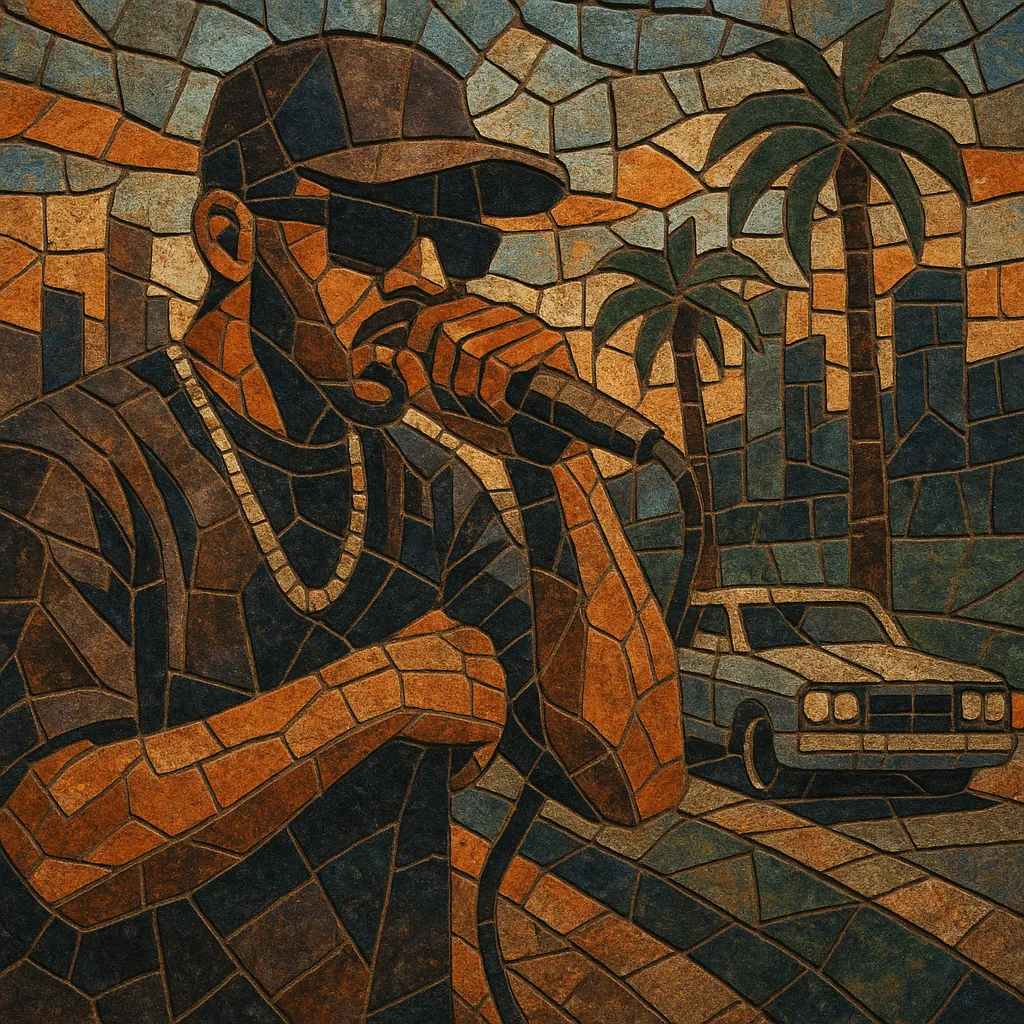
West Coast hip hop is a regional style of hip hop that arose on the U.S. West Coast, especially in Los Angeles and the San Francisco Bay Area. It is known for its heavy funk-influenced grooves, prominent synthesizer leads, deep bass, and a laid-back but confident delivery.
While the early scene mixed electro and old-school rap aesthetics, the late 1980s ushered in hard-edged street narratives associated with gangsta rap. In the early 1990s, Dr. Dre and peers popularized G-funk, a sleek, bass-heavy update that sampled and reinterpreted P-Funk. Later waves—from Bay Area mobb music and hyphy to Los Angeles “jerkin’” and ratchet—continued the region’s emphasis on catchy hooks, swagger, and club- and car-ready beats.
Lyrically, West Coast hip hop ranges from party anthems and cruising music to vivid depictions of street life, social realities, and personal introspection, all delivered with distinctive regional slang and cadence.
West Coast hip hop emerged as hip hop culture spread from the East Coast to California. Early Los Angeles artists fused old-school rap with electro and funk (e.g., Egyptian Lover, World Class Wreckin’ Cru), while the Bay Area cultivated independent voices like Too Short. This period established a foundation of drum-machine-heavy beats, synthesized textures, and party-oriented lyricism.
By the late 1980s, Ice-T and N.W.A brought uncompromising street reportage to the forefront, catalyzing the rise of gangsta rap. In 1992, Dr. Dre’s The Chronic codified G-funk: slow-rolling tempos, rubbery Moog-style bass, whiny lead synths, talkbox hooks, and P-Funk samples. Death Row Records (Dr. Dre, Snoop Dogg, 2Pac) defined the mainstream sound of early–mid 1990s West Coast rap, while the Bay Area developed mobb music’s thick bass and hypnotic loops.
The Bay’s hyphy movement (E-40, Keak da Sneak, Mac Dre) emphasized frenetic energy, whistle-led riffs, and dance culture. In Los Angeles, the jerkin’ scene favored uptempo claps and sparse, bouncy beats, while underground hubs like Project Blowed and Stones Throw nurtured experimental and alternative approaches.
DJ Mustard’s minimalist, midtempo “ratchet” sound dominated charts with syncopated handclaps and simple, infectious melodies. Artists such as Kendrick Lamar fused classic West Coast sensibilities with progressive songwriting and social commentary, reaffirming the region’s global influence while expanding its sonic and thematic range.

